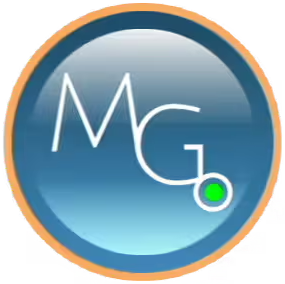Lighting the way in Orthostatic Tremor Rehabilitation
Orthostatic Tremor (OT), can make simple standing feel shaky and unsafe while in weight-bearing postures and paradoxically have no symptoms while moving or sitting/ lying. While medications help some, many people still struggle with confidence in everyday life. This type of tremor makes standing in line at the grocery store, talking with friends outside your home, and waiting to fill prescription as nightmare for those affected by OT. Objectively, ee can measure OT with a simple criteria: Time-To-Tremor and with individual disability scores. I have even use the Restless Legs Study Group Score as a metric but changed the verbiage to OT until something better is published.
As a clinician who treats OT patients in my community, through trial and error i have found a few key components that have helped my patients regain control over their symptoms and their lives.
1) Don't try to stop the tremor. This is the most common trap that patients and clinicians fall into. This is a futile exercise and very frustrating for the patient. I recommend strongly against Botox injections and attempting to medicate the tremor into submission. Rather, focusing on developing gentle movement strategies at the foot, ankle, knees and hips to extend your time to tremor and help hide any "Hem Sign" while in the community. See the video for more information on this type of movement submission strategy.
2) Brain Body sensory motor training. Uptraining both brain reaction, identification, and balance strategies all have helped OT patients through processing and distraction while being combined with their movement strategies.
3) Cardiovascular and Muscular strengthening. A foundation of CV health and general muscular conditioning makes sense in this population as many are bound to a sedentary lifestyle because of the tremor presenting in static weigh-bearing conditions. I am typically having patients perform 10-20 minutes of CV training during each visit.
In this below video, you will see one of my patients "Becky" (with permissions) going both through general training session and an interview speaking to how this program has changed her life and given her control to maintain her community involvement and actually improve her symptoms.
Two clinic-friendly tools—reaction pods (lighted targets you tap or step to) and visual-feedback lasers (projecting a dot/line you align your head or trunk to)—can turn rehab into precise, motivating practice that targets what OT challenges most: dynamic balance and functional stability.
Why these tools?
- External visual cues can steady timing and step planning. Wearable laser cueing has improved gait pattern and stability in neurological populations, showing how salient visuals sharpen movement control—principles we can adapt for OT balance work. Frontiers
- Interactive, sensor-based training (think “exergaming” with lighted targets) meaningfully improves gait and balance outcomes in adults, supporting the use of reaction pods for graded, feedback-rich practice. BioMed Central
How to use them (clinic or home, 10–15 min blocks):
- Stand-step matrix: Arrange pods in a small semicircle on the NeuroStation. From quiet stance, step to the lit pod, tap, and return. Start with hand taps, progress to foot touches, then add a light head turn. Goal: smoother weight shifts and reactive balance.
- Laser line tracking: With a head-mounted laser, trace a slow line on the wall between MGI reaction pods while maintaining stance. Progress from wide to narrow base, then add gentle perturbations from a therapist or stand on foam
- Dual-task reaches: Place pods at different heights. Tap the light while keeping the laser dot centered on a target. Add simple cognitive rules with the Hit / Avoid App game. (e.g., “only tap blue if it’s on the left”).
- Sit-to-stand with targets: Rise, reach to a lit pod, control descent. Emphasize tall posture and steady foot loading.
Safety & progression: Guard closely, use a counter or harness if needed, and progress one variable at a time (base of support, head motion, speed, dual-tasking). Track a few simple metrics—successful taps, time-in-stance without support, confidence rating—to connect training with quality-of-life wins like cooking, queuing, or church standing.
References (past 5 years)
- Zhang W, et al. Frontiers in Neurology, 2023 — Wearable laser cueing improved gait pattern/stability in PD. Frontiers
- Mao Q, et al. Journal of NeuroEngineering & Rehabilitation, 2024 — Sensor-based interventions meta-analysis showed gains in gait and balance in older adults.
__________________________________

